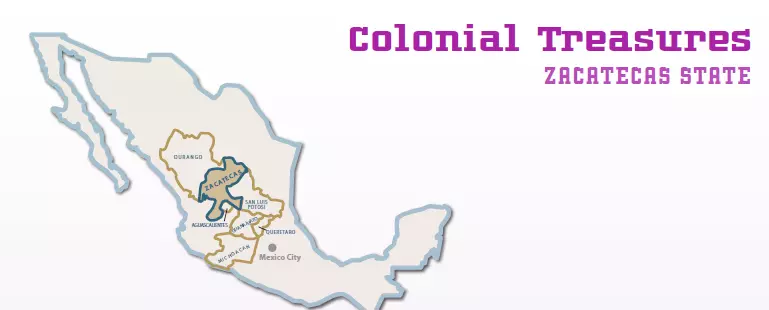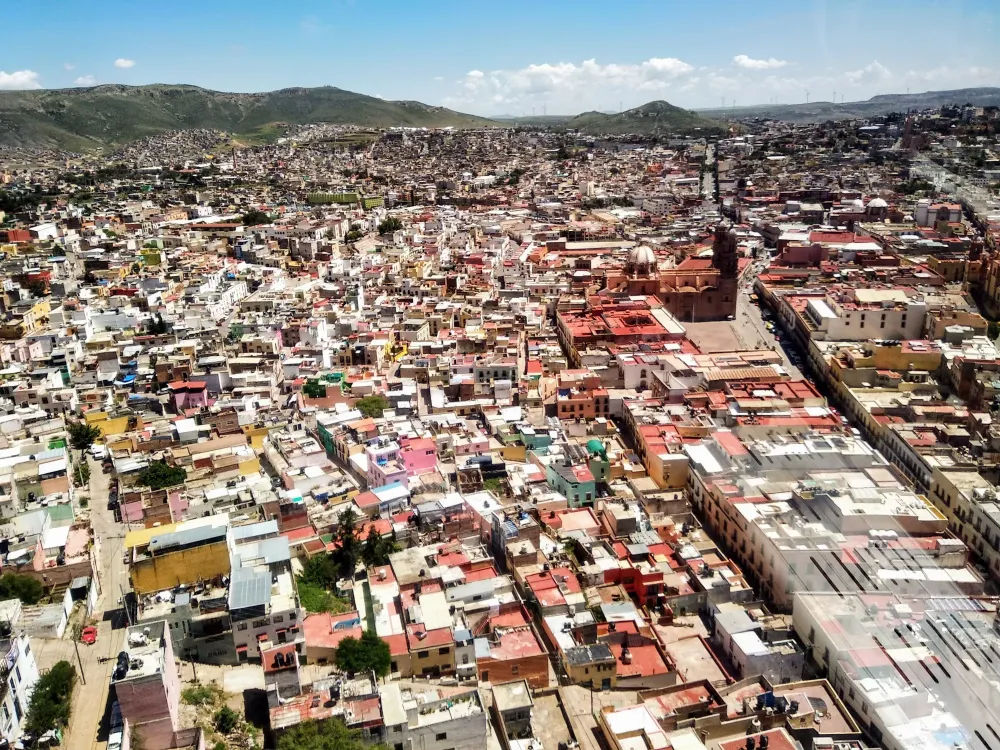Known as the city with a “face of stone and a heart of silver,” Zacatecas reigns over the windswept plateaus of the State of Zacatecas. This fabled silver city lies 4-hours (300 km) north of Guanajuato and is a detour into Mexican history no visitor will regret. Living here presents both opportunities and trade-offs. If you’re seeking an authentic colonial Mexico setting in high desert splendor, Zacatecas City can satisfy on many levels.

Zacatecas is one of Mexico’s most eye-catching places for Mexico living. The Historic Center of Zacatecas was designated a UNESCO World Heritage Site in 1993. This was based on its outstanding cultural properties. It is notable for its harmonious design and the Baroque profusion of its façades, where European and indigenous decorative elements are found side by side. At 8,100 feet elevation (Mexico’s second highest city), Zacatecas will literally take your breath away. The city’s architectural magnificence lies in its many grandiose buildings, both religious and civic. The Cathedral, built between 1730 and 1760, dominates the center of town.
Though inhabited in pre-Hispanic times, Zacatecas was officially founded in 1546 after the discovery of a rich silver lode. Zacatecas reached the height of its prosperity in the 16th and 17th centuries. In the late 16th century, several religious orders (Dominican, Jesuit, Agustin, and Franciscan) began constructing churches with the help of local silver barons. Its historic center is a tight clustering of magnificent churches, abandoned convents and sturdy colonial architecture.
By the early 18th century, Zacatecas was producing one-fifth of the world’s silver. For centuries, Zacatecas served as the northern frontier of Spain’s New World Empire. Religious crusades into Mexico’s hostile northern territory (including what is today the southern U.S.) were launched from Zacatecas. As such, its wealth and strategic position were coveted by warring factions throughout the 19th century. And in 1914, one of the Revolution’s greatest military battles took place here, as Pancho Villa’s troops defeated an army of 12,000 soldiers under General Huerta.
Several features set Zacatecas apart from its colonial sister cities. First is its setting; it is nestled in a ravine between two imposing hills: Cerro de La Bufa and Cerro del Grillo. Its narrow cobblestone streets and pedestrian alleyways wind upward past manicured parks and colonial buildings constructed of soft pink and peach colored stone.

The second differing factor is one of Mexico’s finest collections of ancient art from around the world. It is also home to Mexico’s finest mask museum and works by renowned 20th century painters and muralists. And finally, Zacatecas (population 138,000) receives few foreign visitors. So, North Americans feel special and are treated as true guests by the city’s proud residents. The expat community is small. However, Zacatecas sends its sons and daughters north to find a better life. So, residents have deep connections with cities across the US.
An eclectic mix of attractions highlights the city’s sightseeing options. Its museums are some of Mexico’s finest, while several restful parks offer quiet seclusion. For adventure, this colonial gem has two of Mexico’s most enjoyable adventures: a trip underground into a silver mine and an aerial tramway (teleférico) that soars above the city’s streets.
Visitor facilities are quite well-developed. There are two world-class hotels, several charming 3-star properties, and a handful of good restaurants. On its outskirts, US box stores have a firm footing (no Costco, yet) and there’s non-stop air service to Los Angeles, a plus for West Coat travelers.



